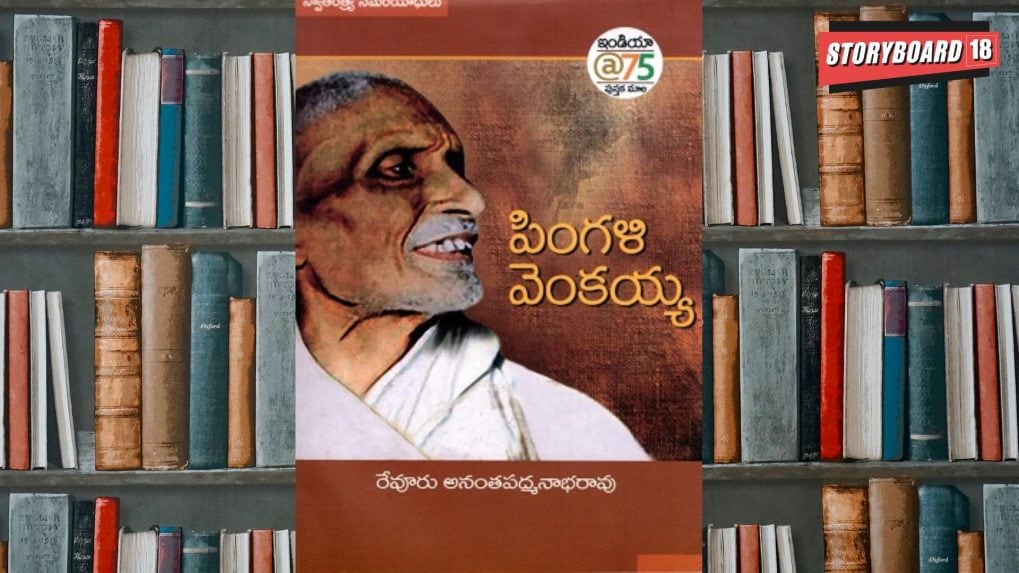Digital
Why OpenAI is hiring 100 ex-bankers: Inside the ChatGPT-maker's secret project to automate Wall Street's grunt work

Today, 2nd August marks the birth of Pingali Venkayya (1876-1963),the visionary who conceptualized and designed the initial version of the Indian National Flag.
In January of 2022, the National Book Trust released ‘Pingali Venkayya’ as part of their publishing series ‘India@75'. Venkayya himself wrote a book about the flag in 1916 titled “A National Flag for India,” which showcased thirty proposed flag designs. Here are the first few lines from this very rare book.
“From my childhood I have had an inborn fancy for flags. Long ago when it so happened that I had to serve under a nobleman superintending his agricultural operations, I had in ardent enthusiasm for a flag designed one for my own use as my ensign, and always hoisted it in the front of my hut in the midst of the fields from which the villagers in the neighbourhood among whom lived many of our farm labourers, easily understood that I was at my head quarters and were thus very regular in their attendance to their different duties. It was during these days in 1907 that the idea of designing a flag for the mother country strongly seized hold of me first, and I began thinking over the subject;…"
Our five #BookStrapping insights into this author are as follows:
1. Venkayya’s defining moment came while serving in the British Indian Army during the Second Boer War, when he was compelled to salute the Union Jack. This galvanized him to create a flag for a free India, a mission that would shape the nation’s identity.
2. His book, A National Flag for India is referenced in historical works and biographies and played a crucial role in documenting his vision. Giving shape and colour to his ideas, the drawings and paintings for the manuscript of these designs were accomplished by Mr E Venkatasastry (an artist from the Andhra Jateeya Kalasala of Masulipatam) and his students. This book was published with financial assistance from a number of legal professionals of the time.
3. In the book, he wrote, “In designing a true national flag for India, one cannot do better than giving a place on the flag, to the religion of each of the eight important communities in this country, with a sacred object of worship of each of these religious sects, in the centre of the colour allotted to it on the flag. I have therefore decided to allot the seven colours of the rainbow in the heavens to the seven religious sects in this country, with a pure white space to Jains.” These religions were identified on the basis of the census; Hindoos, Musalmans, Buddhists, Christians, Sikhs, Jains, Parsees and Jews. Venkayya was convinced about the centrality of religions in the life of the country and wanted to have a flag representing all these religious faiths. For the Hindoos, he assigned yellow along with trident, Shankhu and Chakru, red was chosen for Mohamedans, orange for the Buddhists, indigo with the cross for the Christians, green for the Sikhs, white for the Jains, rose with the sun for the Parsees and blue for the Jews.60 He, however, does not offer any basis for why specific religion was assigned specific colour. When Venkayya met Gandhi in Vijayawada and presented his designs in 1921. Gandhi saw the merit and requested adjustments, including a white stripe to represent all communities and a spinning wheel symbolizing self-reliance.
4. This was certainly not the first initiative towards conceiving and giving concrete shape to the idea of a flag for the entire nation. There were similar efforts by Sister Nivedita, Sirish Chandra Bass and Madama Cama around ideas like 'Bharat Mata', the 'Vajra' etc. What made Venkayya’s design stand out was the detailed explanation as well as the reasoning behind each of these designs.
5. P Venkayya was a learned man. He completed his senior Cambridge degree from Colombo and spent most of his life researching on agricultural crops. For his pioneering study on Cambodian cotton he was popularly known as Patthi Venkayya (Patthi in Telugu means cotton and for his knowledge of Japanese language, Gandhi gave him the moniker “Japan Venkayya.
This 19th century patriot, born in in Andhra Pradesh’s Krishna district, began the process of giving India one of its most recognizable identities; the flag.Even today, the tricolour remains a testament to his enduring vision for India, celebrated in history books, biographies, and his annual remembrance today.
Credits: The picture of Venkayya's flag is derived from the book Reverence, Resistance and Politics of Seeing the Indian National Flag by Sadan Jha, Cambridge University Press, 2016.
Reeta Ramamurthy Gupta is a columnist and bestselling biographer. She is credited with the internationally acclaimed Red Dot Experiment, a decadal six-nation study on how ‘culture impacts communication.’ Asia's first reading coach, you can find her on Instagram @OfficialReetaGupta.
In a wide-ranging interview with Storyboard18, Sorrell delivers his frankest assessment yet of how the deal will redefine creativity, media, and talent across markets.